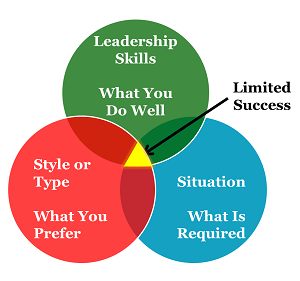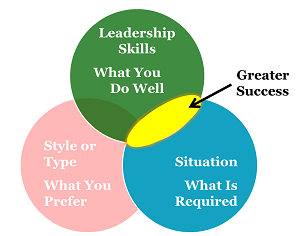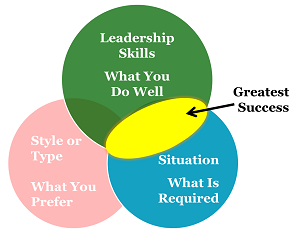When you walk in the room, who shows up for Read more →
Styles & Types? Or Situations & Tools?
Posted Wednesday, March 13, 2013Allen Slade
In my experience, the leader’s toolbox is a powerful way to think about your leadership. But some people push back, especially fans of leadership styles or personality types.
Styles and Types
Some leadership advice focuses on changing leaders to be the right style. Be more participative or be more communicative. Be a Theory Y leader. Be a 9,9 leader. Unless you luck into the right situation where this style is always best, one-best-style leadership advice should be avoided.
A somewhat better form of leadership advice is to “find your leadership style” so you understand how you work best. A strategic leader might want to complete and complement her leadership style by hiring a detail oriented manager. Closely related is “find your type” advice using a personality test or the Myers Briggs Type Indicator. If you know your personality type, then you can find situations that fit your personality. Introverts can work on solo analytical projects, while extraverts should find jobs with lots of personal contact.
 Taken to the extreme, “find your style” or “find your type” leadership limits your success as a leader. Your sweet spot as a leader will be the narrow intersection of skill, style and situation. If your style limits your range of leadership, your success will also be limited.
Taken to the extreme, “find your style” or “find your type” leadership limits your success as a leader. Your sweet spot as a leader will be the narrow intersection of skill, style and situation. If your style limits your range of leadership, your success will also be limited.
Restricting yourself to one preferred leadership style or personality type is like restricting your driving to only certain roads. If you can drive on more roads, you will go further.
 If you take your prefered leadership style or personality type out of the picture, you expand your sweet spot. You can lead in more ways and you will have greater success as a leader.
If you take your prefered leadership style or personality type out of the picture, you expand your sweet spot. You can lead in more ways and you will have greater success as a leader.
For example, my personality is strongly introverted. Yet, to be successful as a consultant, an HR executive and a professor, I stopped acting like an introvert. I developed my public speaking skills. I focused on networking even when I wanted to curl up with a good book. I don’t use my personality as an excuse. If my leadership does not serve me well in a given situation, I try another harder or switch leadership tools.
Situations and Tools
The leader’s toolbox approach expands your choices as a leader:
1. Fill your toolbox with a variety of leadership tools for relationships (communication skills, meeting demeanor, decision making techniques, confidence and emotional intelligence) and tasks (budgeting, scheduling, goal setting, execution and quantitative skills).
2. Pick out the right tool for the situation.
3. Get feedback and adjust as necessary.
Bottom line: To be fully effective as a leader, you must be flexible in your own behavior. A lack of adaptability fundamentally limits you as a leader. You cannot rest on a certain leadership style or preferred type of interaction. You should fill your toolbox with a wide range of leadership skills and be flexible in when you use which tool. You will increase the sweet spot of your leadership and reach your greatest success as a leader.


